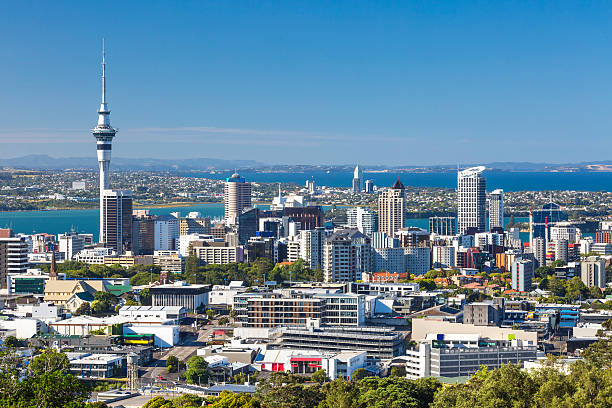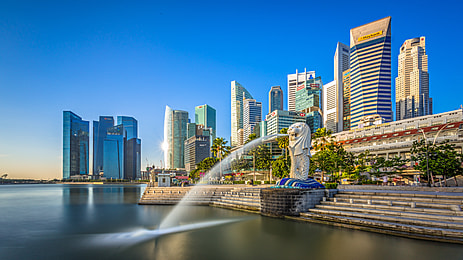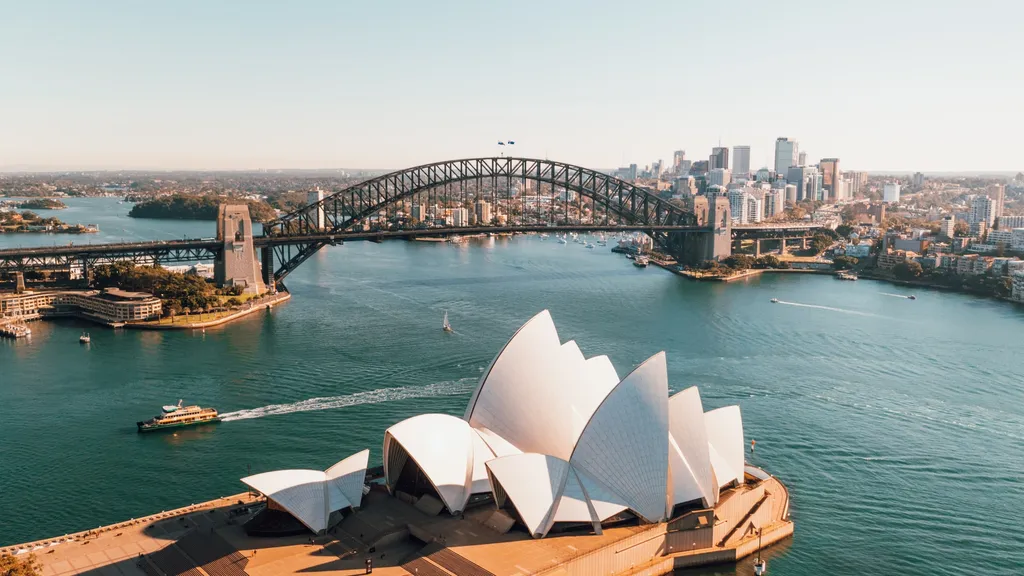INTRODUCTION
The priorities of a country, its security issues, economic requirements and cultural belongings reflect on the immigration regulations it sets. In a world that is becoming more and more connected every day with various forms of migration taking place across continents, territories and communities, such change calls for a constant adjustment as well as updating by countries in their migration policies. Some countries however, because of different socio-political reasons have employed strict immigration laws that control entry or stay by outsiders.
These can range from restrictive visa requirements and rigorous asylum procedures to physical barriers and stringent enforcement measures.Tough immigration laws are there because of several reasons. They ensure that in some states, national security is given first priority and this leads to tactics aimed at keeping people away from entering illegally and possible threats. Furthermore, other countries use them as measures to guard their labor markets and cope economically with the immigrant’s. Moreover, for nations which have a deep sense of identity; social integration is very important to them, so is cultural conservatism or historical traditions.
They are exploring some different countries because they have very strict laws about people coming into them, where we take a look at individual methods used but also big picture stuff about migrants themselves as well as how it affects everyone else globally. For instance; starting with America`s ban on travellers which received criticism and no room for error among immigrants from other places, including those seeking political refuge against violence in their home countries, offshore detention concept in Australia, as well as thorough screening before getting a Japanese visa.Better understanding of these rules and their outcomes can help us appreciate the intricate relationship between national interests and human rights within international migration.
Immigration policies across the globe vary considerably from country to country, reflecting differing socioeconomic considerations and political climates. In order to curb migration, ensure national security or preserve the nation’s cultural heritage, some countries have introduced tougher policies on immigration. This research paper considers some of the countries with the toughest immigrant laws as well as reasons for taking this course of action; its significance is also assessed here.
1.United States
The United States has been referred to as a nation made by immigrants; it has experienced marked changes in its immigration policies throughout its history. In times past it was quite hospitable while in the last few periods these laws have been made rather strict due to security reasons tied to economic development and integration issues in terms of culture. The most severe measures that were aimed at controlling immigration be it legal or illegal, were instituted by the Trump administration. It has become a hot topic for discussion among many people as such rules exhibit ineffectiveness. The major policies and actions that have influenced American immigration in the last few years are looked into in this part.
Policies and Measures
- Travel Ban : The introduction of a travel ban that was aimed at a number of countries with a majority of Muslim populations witnessed a split reaction. This executive order was met with resistance at various levels of the judicial process for reasons bordering on national security and had to undergo changes successively. The last limitations were imposed on those that were from Iran, Libya, Somalia, Syria, and Yemen.Critics said the ban was discriminatory and pleased America’s values of diversity and inclusion
- Zero Tolerance Policy : In 2008, this policy of zero tolerance was implemented. It required that all adult violators of US borders be prosecuted; thus dividing thousands of kids from their guardians. It was meant to discourage unlawful entry into the country; however, it faced heavy criticism from many people who argued that its effect on human beings was morally unjustifiable. The pictures reportedly taken inside jails where minors were held caused a storm on social networks – eventually forcing authorities to abandon this approach.
- Public Charge Rule : The definition of “public charge,” a legal term for immigrants who rely public benefits like food stamps, Medicaid or housing support, was broadened by the administration to restrict new immigrants acquring immigrants green cards. While the main goal was to prevent non-natives from depending on American taxpayers’ money, there was a downside: some newcomers might not get help when they need it.
- Asylum Restrictions : The Refugee Protection Protocols (RPP), also known as the Migrant Protection Protocols (MPP), were established to curb the growing number of asylum claims. This policy stipulated that asylum-seekers should hold on in Mexico as their applications were being processed in the United States, which was often dangerous and risky. Similarly, deals with nations such as Guatemala and Honduras necessitated that migrants first request protection there before approaching America.
These policies and measures had a major effect on immigration movements by lowering the number of people who were coming into the country as legal or unauthorized immigrants. These policies also aroused a countrywide discussion on how to balance security and humanitarian concerns, which shows the intricate nature of US immigration rules.
2.Australia
Australia is known for being a place with tough rules about who can come here – especially if you are an asylum-seeker or refugee. It has great countryside and lots of different people so it has taken steps to make sure that no one comes without permission and to control these borders well. This is because Australia wants to protect itself from enemies who might want to attack us somehow; keep poor people out who could change our way of life forever & threaten us financially as well.Australia’s approach to alleviating the number of illegal immigrants was effective though it prompted substantial conversation and condemnation, most notably on how asylum seekers were handled.
Policies and Measures :
1. Offshore Processing : Australia’s immigration policy has seen a lot of controversy due to offshore processing centres. The policy requires that asylum seekers who come by sea be taken to Nauru and Manus Island, which belong to Papua New Guinea. The government uses this policy to discourage dangerous journeys through the sea and prevent human traffickers from operating freely within its borders. Critics argue that it encourages such activities instead because of poor living conditions in these facilities as well as detention without time limits for asylum seekers including young ones.
2. Turnbacks at Sea : The Australian government stopping boats transporting refugees and sending them back to where they came from. This mission is known as: Operation Sovereign Borders and is carried out by the Australian navy, which has helped decrease their arrival numbers. However, those who disagree with it say that the policy goes against international conventions while putting at risk those who are running away from bad conditions.
3. Temporary Protection Visas (TPVs) : Many a time, refugees who receive asylum end up receiving temporary protection visas instead of permanent residency when they are distributing welfare. Through this policy Australia restricts the rights and access to benefits for those who have been granted this kind of refuge like family reunion and permanent settlement which ends up creating apprehension among them. All these are in a bid to dissuade other refugees from deciding on reaching Australia by boarding boats.
4. Community Sponsorship : Even though Australia is not very tolerant to illegal immigrants, it can be noted that it has got a Community support program (CSP) for sponsoring refugees through people, small scale businesses and based organisations. Though he has a narrow chance, it is expensive and hard to implement.
Even though there are significant controversies, these policies truly show Australia’s attention to keeping away unauthorised residents as well as taking care of humanitarian.
3.Japan
Due to its cultural homogeneity and cautious approach to foreign influence, Japan is known to have really strict immigration policies. In spite of having a great number of demographic challenges like an ageing population together with a decreasing workforce, Japan has continued to limit immigration tightly. This has led to low levels of admitting refugees and tough controls on overseas labourers. Japan’s migration laws mainly favour native-born citizens.
Policies and Measures
Japan’s immigration policies are very strict and designed to allow for a limited number of foreigners.
1. Stringent Visa Requirements : In granting visas, Japan imposes stringent restrictions, especially on individuals with low skills. Its aim is to bring to the country very competent professionals who specialise in Techs, Education, Engineering among other fields with few applicants getting selected. Those going to Japan must prove beyond any reasonable doubt that they possess relevant qualifications and enough experience hence this becomes quite a difficult task for most of them. On the other hand, for student visa or working holiday, one has to go through intense checking in order to qualify for it.
2. Low Refugee Acceptance Rate : Japan is renowned for its extremely low asylum acceptance rate. In 2019, among more than 10,000 asylum requests, refugee status was granted to only 44 people. The asylum application is a process that takes a long time and is difficult; it often takes years to complete, and defendants are in most cases prohibited from using social services or working. This policy is also influenced by an emphasis on safeguarding national security and promoting social cohesion in Japan.
3. Long Processing Times and Limited Integration Support : In many cases, asylum seekers, as well as other persons seeking immigration status, are usually characterised by extensive duration of their application processes that sometimes have to extend over an indefinite period, during which the applicants remain uncertain about their own destinies. The result of this is that they are, in one way or the other, prevented from engaging in any form of employment or even accessing social welfare services thereby inhibiting their integration into Japan’s social-economic structures. In relation to this, the process of assimilating foreigners living within one country into that particular society’s customs has been hindered by undersized policies from the government, showing that the state as a whole still holds back multiculturalism.
4. Temporary and Specific Visas : Japan offers different kinds of short-term and specific visas e.g. Technical Intern Training Program (TITP) visa to allow foreigners to work in Japan upon stringent terms for a certain period. Nonetheless, these permits have been pointed out for promoting exploitation without clear paths towards obtaining permanent residency or citizenship. In a nutshell, to keep a homogeneous culture within Japan as well as safeguarding national security has for a long time been the main aim of Japanese immigration policies although they are highly critiqued.
4.Hungary
International attention has been towards Hungary because of their exclusive immigration measures taken by the PM Viktor Orbán. It was mainly about its national security, preserving the cultural heritage as well as its political reasons for having done so up to this time around since all immigrants are potential terrorists. Such measures are just but part of the ongoing rise in European nationalism and anti-immigrant attitudes.In Hungary, immigration policy is a combination of strict border control, tough dealing with individuals seeking refuge, and laws that try to prevent both illegal and legal migration.
Policies and Measures
1. Border Fence : Due to the 2015 European migrant crisis, Hungary set up a razor-wire fence at its southern borders with Serbia and Croatia. It was built to stop illegal immigrants from coming through that transit has been patrolled intensively by Hungarians. The result is the decreased number of migrants who enter Hungary, but it also faced some opposition because it was regarded as unfriendly to those who went through hardships crossing over without any proper assistance.
2. Transit Zones : Hungary set up transit zones at its borders where the refugees are being held until they have their asylum claims processed. These zones are meant to prevent immigrants from coming into the country, but they have been widely condemned as being inhumane and poorly equipped. In transit zones for migrants seeking refuge, it is difficult for them to venture outside since it requires permission from authorities while their processing may also take an unduly long time or lack transparency.
3. Criminalization of Aid : During 2018 Hungary made it a crime to give help to people without residence papers. This law, which was named after sponsor George Soros, focuses on groups and humans offering lawful medical care among other kinds of aid to people on the move. Breaking the law might earn one severe punishment such as being jailed or fined heavily. The purpose of this policy line is reducing the helping systems that immigration control depends on for its success so that this way makes it harder for would-be migrants around globe to set off into unknown lands
4. Asylum Policy Changes : In its refugees acceptance policy, Hungary has performed diverse dynamics all aimed at making it quite intricate for the migrants to be recognized as refugees. This includes reducing the time frame within which applications for asylum can be submitted, limiting appeal rights as well as directing that asylum seeking be done in transit zones. It is worth noting that fewer numbers of refugees are recognized implying that getting refugee status in this country is quite challenging.
Impact : Hungary has been effective in reducing the number of migrants entering the country through its immigration policies. However, the European Union, human rights organisations and international bodies have heavily criticised these policies due to their severity and possible violation of human rights. Such policies emphasise the conflict between national sovereignty and global responsibility in migration management.
5.Saudi Arabia
Saudi Arabia is globally known for some of the strictest immigration laws because it has many workers from other countries. The reason why it has this kind of policy when it comes to people moving into or out of their country is due to socio-economic objectives, cultural and security issues they care about as a nation-state which also influence decision-making processes on immigration matters within its boundaries. This means therefore that Saudi Immigration regulations help in checking foreign job displacements as well as safeguarding cultural practices against contamination by outsiders. For other benevolent factors like fear of losing sovereignty we can safely conclude that despite being hosted by host nations, these aliens should not be allowed to stay here indefinitely although they enjoy making economic gains here then move back to their countries of origin later on without caring about what happens to our economy as a whole.
Policies and Measures
1. Kafala System : The Kafala system is the cornerstone of immigration policy in Saudi Arabia. This system requires an employer to be responsible for the legal status of his/her foreign employee, making it impossible for these employees to change jobs, leave national boundaries or sometimes move around the country without consent from their employers or sponsors. Though aimed at addressing problems regarding expatriates working there while managing the workforce in general, it has mostly been seen as one that promotes human trafficking in all ramifications and is exploitative in the end.
2. Deportation : As it strives to enforce immigration laws and control the labour market, Saudi Arabia deports illegally staying employees on a regular basis. Often, these deportations form components of bigger schemes aimed at controlling numbers of aliens working in the country by making them abide by regulations. The manner in which some massive forced reparations have been carried out is seen as hasty and occasionally severe, disrupting ordinary lives and putting at risk the safety of numerous migrant labourers.
3. Limited Path to Citizenship : For decades now, it has been quite hard for non-Saudis to get citizenship in Saudi Arabia even if they have been in the country for a long time serving as employees or undertaking other vocations. Saudi programs remain stringent in respect to the path to becoming a citizen making it next to impossible to naturalise. This is because the government wishes to preserve the demographic and cultural orientation of its society, though it puts these foreigners who stay there over an extended period in a situation where they are not sure of anything as concerns their identity.
4. Recent Reforms : Saudi Arabia has initiated some changes aimed at improving conditions for migrant workers in response to Vision 2030’s international criticisms and economic reforms. These measures include reforms to the Kafala system, which allow for increased job mobility while at the same time reducing reliance on sponsors for exit and re-entry visas. However, despite the fact that these steps would serve to enhance migrants’ rights and comply with international labour standards, their full implementation and enforcement are still problematic.
Saudi Arabia blends control on immigration with continuous reforms, this shows its complex socio-economic environment and ever changing manner of handling a big foreigner population.
6.Israel
Israel’s unique geopolitical situation and demographic issues has impacted on its immigration laws. It was founded as a state for Jewish people and therefore it has made sure that such individuals are given the priority when they look for citizenship in the country compared to non- Jewish immigrants or foreigners who want refugee status have access to Israel through management policies that are strict and help it in handling migrant refugees and asylum seekers who are usually non-Jewish. These strategies reflect Israel’s fight to remain a Jewish nation, keep off any insecurity issues facing it at large while at the same time countering multiple challenges which emanate from regional inst efforts, in brief words they are adjusting their immigration policies to meet ever-changing requirements.
Policies and Measures
1. Law of Return : Grounded in the year 1950, The Law of Return is a fundamental part of Israel’s migration policy. It allows Jews worldwide to make aliyah and acquire Israeli nationality. This rule is an integral part of Israel’s character as a Jewish country committed to offering refuge in cases of persecution to fellow Jews. Every so often, the qualifying requirements get altered to cater for different opinions on qualities of being Jewish.
2. Restrictions on Asylum Seekers : Israel‘ s response to non-Jewish asylum seekers is strict especially to those from countries like Sudan and Eritrea. However, a majority of Eritreans and Sudanese who seek asylum do not qualify for refugee status. The authorities have therefore decided to incarcerate some of them at the Holot detention facility or encourage them with money to go back home. These policies are meant to discourage migration and ensure demographic homogeneity.
3. Border Fence : Israel built a barrier along the borders of Egypt and Gaza in an effort to prevent illegal immigration and improve security. The number of African migrants coming into the country has dropped significantly due to the physical barriers at the border fence with Egypt which was completed in 2013.These physical borders are part of several measures intended to check unauthorised entry and manage security issues.
4. Migrant Worker Policies : A large number of migrant workers are employed by Israel especially in sectors like construction and agriculture. The employment of foreign workers is controlled through visa restrictions and employer sponsorship requirements which have been strictly implemented by the government in order to safeguard the local labour market as well as alleviate labour shortages faced by some industries.
The policies have balanced the demographic objectives, security needs and economic considerations of the country, which is why they are effective when it comes to migration management. However, human rights organisations have criticised them for how non-Jewish migrants in their country are treated.
CONCLUSION
The reason Russia introduced strict immigration controls was because it had wider socio-economic and political matters to put in order. Russia is using strict visa conditions, deporting multiple times, alongside complicated registration steps so as to contain its borders and regulate entry of present aliens. This blend of issues motivates such strategies inclusive of safety worries among others.The reason why Russia had to enforce strict immigration policy was that it had bigger socio-economic and political problems that it needed to straighten out. Russia uses stringent visa restrictions, deportations many times as well as intricate instructions on registering as a foreigner so that it can guard its borders and control streams of aliens into the country. Such a complex of factors is responsible for safety concerns necessitating use of such methods.
There is no more compelling proof of the firm determination of Russia’s authorities to keep illegal immigration in check than deportations and raids. These mostly focus on Central Asian labour migrants with ambiguous legal status, and within the scope of migration policy enhancement drive. Although they are effective in curbing illicit practices in the country and enhancing observance of migration regulations, such steps have attracted accusations of promoting xenophobia and putting migrant groups on edge.When working with complex registration processes, another control layer gets added that makes sure anyone who wants to reside and work in Russia has to move through some systematic bureaucracies which are hard and burdensome at times. Some migrants find it hard to cope with such situations especially when they cannot meet all requirements set by law, while others are compelled into corrupt deals thereby being used anyhow.
In conclusion, the tough immigration laws in Russia underscore the fine line between national interests and the problems of controlling a varied and ever changing migration landscape. Although these measures have proved successful in limiting migration flows and meeting security objectives, they have also raised questions concerning human rights as well as the treatment of immigrants. In order to keep pace with changing global migration patterns, Russia is likely to have to make further modifications in its approach.Russia can work towards a more balanced and humane immigration system that harmonizes with national goals and global responsibilities only if it understands and deals with the intricacies of these issues
Looking for Visa? Contact Us Now!







